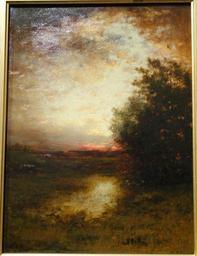Introduction
Art has always been a form of expression, a way for individuals to communicate their thoughts, feelings, and experiences. Among the myriad techniques available to artists today, one stands out for its unique blend of simplicity, versatility, and aesthetic appeal: linocut printing. In this article, we will delve into The Art of Linocut: Why Contemporary Printmakers Favor This Technique, exploring its history, methodology, and the reasons behind its resurgence in contemporary art circles.
Linocut is a relief printing technique where an image is carved into a linoleum surface. It offers artists a way to create striking designs that can be reproduced multiple times while maintaining high quality. As we explore this fascinating art form, we will also touch on how linocut integrates with various artistic expressions like contemplative photography and modern interior decor.

What is Linocut?
Linocut printing is a technique that involves carving images into a soft linoleum block. Created as an alternative to woodblock printing, it allows artists to craft intricate designs with relative ease.
A Brief History of Linocut
Linocut originated in the early 20th century and quickly gained popularity among printmakers because of its flexibility and accessibility. Artists like Pablo Picasso utilized the medium for its expressive potential. As we navigate through The Art of Linocut: Why Contemporary Printmakers Favor This Technique, we can see how it serves as both an artistic outlet and a practical solution for modern printmakers.
Materials Used in Linocut
To create stunning linocuts, several materials are needed:
- Linoleum Block: The primary canvas for carving. Cutting Tools: Knives and gouges designed specifically for linoleum. Brayer: A roller used to apply ink evenly across the block. Ink: Oil-based or water-based inks are preferred for their rich colors. Paper: High-quality printing paper enhances the final result.
The Process of Creating a Linocut
Creating a linocut involves several steps:
Designing the Image: Artists sketch their design onto paper before transferring it onto the linoleum block. Carving: Using specialized tools, artists carve away sections of the linoleum to create their desired image. Inking: A brayer rolls ink onto the surface of the carved block. Printing: The inked block is pressed onto paper using either manual pressure or through a printing press.Why Do Many Contemporary Printmakers Prefer Linocut to Woodblock Printing?
Many contemporary printmakers favor linocut over traditional woodblock printing due to several advantages:
- Ease of Carving: Linoleum is softer than wood, making it easier for artists to carve intricate details. Cost-Effectiveness: Linoleum blocks are generally cheaper than high-quality woodblocks. Versatility: The technique allows for experimentation with various styles and approaches.
Exploring Contemplative Photography as Artistic Expression
While discussing art forms, one cannot overlook contemplative photography—which focuses on mindfulness and presence in capturing images.
What is Contemplative Photography?
Contemplative photography encourages photographers to observe their surroundings deeply and capture moments that resonate emotionally rather than just aesthetically.

Connecting Linocut with Contemplative Photography
Both linocut and contemplative photography share common ground in self-expression and emotional storytelling:
- Artists use both mediums to convey deeper meanings beyond surface appearances. Both forms invite viewers into reflective experiences.
Integrating Art into Home Interior Design
As we explore more about art forms like linocut and photography, it’s https://squareblogs.net/lipinntldm/artistic-prints-as-essential-elements-of-sophisticated-interiors vital to understand how they play a role in home aesthetics.

Artistic Home Decor Inspirations
Art can transform any living space from mundane to extraordinary. Here are some tips:
1. Creating Inviting Spaces
- Use large-scale artworks as focal points to anchor rooms.
2. Wall Art Placement
- Consider height and scale when hanging pieces; eye level is ideal.
3. Mood Creation Through Colors
- Choose artworks that reflect your personality while harmonizing with existing decor.
Curating Personal Sanctuary Through Decor
Creating inviting corners at home can enhance relaxation through thoughtful placements of art pieces that evoke tranquility or joy.
Combining Modern and Traditional Styles
Integrating different styles creates visual interest:
- Mix vintage frames with contemporary artworks for an eclectic vibe.
Visual Storytelling Through Wall Art
Art tells stories—be it through color palettes or subject matter—and plays a crucial role in personal narratives expressed within home spaces.
Expressive Home Galleries
Designing gallery walls with meaningful pieces fosters emotional connections:
Select diverse artworks that resonate personally. Experiment with layouts—grid-style or salon-style arrangements work well!FAQs
What materials do I need for linocutting?
To start with linocutting, you'll need a linoleum block, cutting tools (gouges), ink (oil-based or water-based), brayer (roller), and quality printing paper.
What's the difference between linocut and woodblock printing?
Linocut utilizes softer material (linoleum), making it easier to carve intricate designs compared to harder woods used in traditional woodblock printing.
How does contemplative photography differ from other types?
Contemplative photography focuses on mindful observation rather than technical perfection; it seeks emotional resonance over purely aesthetic value.
Can I combine different art styles in my home decor?
Absolutely! Mixing modern pieces with vintage items creates dynamic visual interest while allowing you to express your unique style.
How do I choose wall art that enhances my space's mood?
Select artwork based on colors that elicit desired emotions—calming blues for relaxation or vibrant reds for energy—to align with your space's purpose.
What are some affordable options for wall art?
Consider DIY projects or print reproductions from local artists; many platforms offer affordable prints without compromising quality!
Conclusion
In summation, exploring "The Art of Linocut: Why Contemporary Printmakers Favor This Technique" reveals not only its historical significance but also its relevance today amidst evolving artistic landscapes alongside practices like contemplative photography. By understanding these connections between arts—and how they intertwine seamlessly within our living spaces—we cultivate deeper appreciation toward creative expressions around us while enhancing our environments aesthetically!